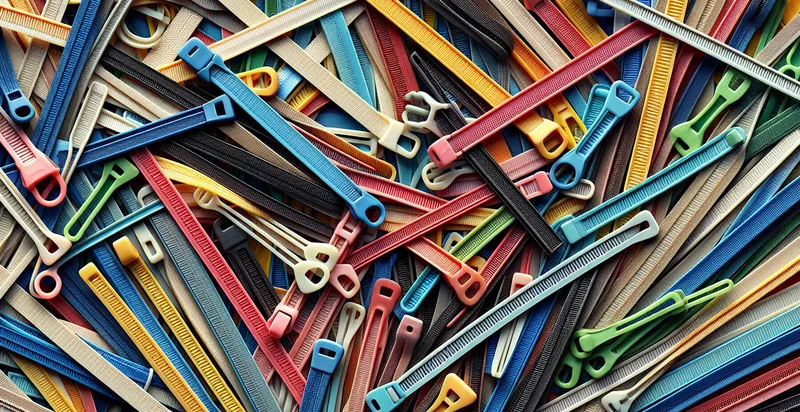Identify zip tie type
using AI
Below is a free classifier to identify zip tie type. Just upload your image, and our AI will predict what type of zip tie it is - in just seconds.

Contact us for API access
Or, use Nyckel to build highly-accurate custom classifiers in just minutes. No PhD required.
Get started
import nyckel
credentials = nyckel.Credentials("YOUR_CLIENT_ID", "YOUR_CLIENT_SECRET")
nyckel.invoke("zip-tie-type", "your_image_url", credentials)
fetch('https://www.nyckel.com/v1/functions/zip-tie-type/invoke', {
method: 'POST',
headers: {
'Authorization': 'Bearer ' + 'YOUR_BEARER_TOKEN',
'Content-Type': 'application/json',
},
body: JSON.stringify(
{"data": "your_image_url"}
)
})
.then(response => response.json())
.then(data => console.log(data));
curl -X POST \
-H "Content-Type: application/json" \
-H "Authorization: Bearer YOUR_BEARER_TOKEN" \
-d '{"data": "your_image_url"}' \
https://www.nyckel.com/v1/functions/zip-tie-type/invoke
How this classifier works
To start, upload your image. Our AI tool will then predict what type of zip tie it is.
This pretrained image model uses a Nyckel-created dataset and has 16 labels, including Adhesive, Cable, Colored, Conductive, Disconnectable, Heavy Duty, Industrial, Insulated, Lightweight and Metal.
We'll also show a confidence score (the higher the number, the more confident the AI model is around what type of zip tie it is).
Whether you're just curious or building zip tie type detection into your application, we hope our classifier proves helpful.
Related Classifiers
Need to identify zip tie type at scale?
Get API or Zapier access to this classifier for free. It's perfect for:
- Quality Control in Manufacturing: The zip tie type identifier can be used in manufacturing facilities to automatically classify and verify the types of zip ties being produced or packaged. This ensures that only the correct products are shipped, reducing errors and maintaining quality standards.
- E-commerce Product Verification: Online retailers can implement the zip tie type identifier to verify product listings against actual inventory. This helps to ensure that the correct zip tie types are being sold, preventing customer complaints and return requests due to incorrect items shipped.
- Supply Chain Management: Distributors can utilize the zip tie type identifier to enhance inventory accuracy by automatically classifying incoming shipments of zip ties. This streamlines the receiving process, reduces manual checks, and improves overall supply chain efficiency.
- Waste Reduction in Recycling: Recycling facilities can leverage the zip tie type identifier to sort plastic zip ties more effectively during the recycling process. By accurately identifying different types, the facility can optimize recycling methods and ensure minimal contamination in the recycling stream.
- Maintenance and Repairs in Agriculture: Agricultural equipment manufacturers and service providers can use the zip tie type identifier to ensure the correct type of zip ties is used for equipment maintenance. This reduces downtime and improves the reliability of repairs, leading to better operational efficiency on farms.
- Customization for Client Projects: Engineering and design firms can leverage the zip tie type identifier to quickly identify the required zip tie specifications for custom client projects. This accelerates the design process, ensuring that clients receive products that meet their specific needs promptly.
- Educational Tools in Technical Training: Educational institutions can incorporate the zip tie type identifier in technical training programs to educate students on material identification and classification. This hands-on application enhances learning experiences, preparing students for real-world scenarios in manufacturing and logistics.


